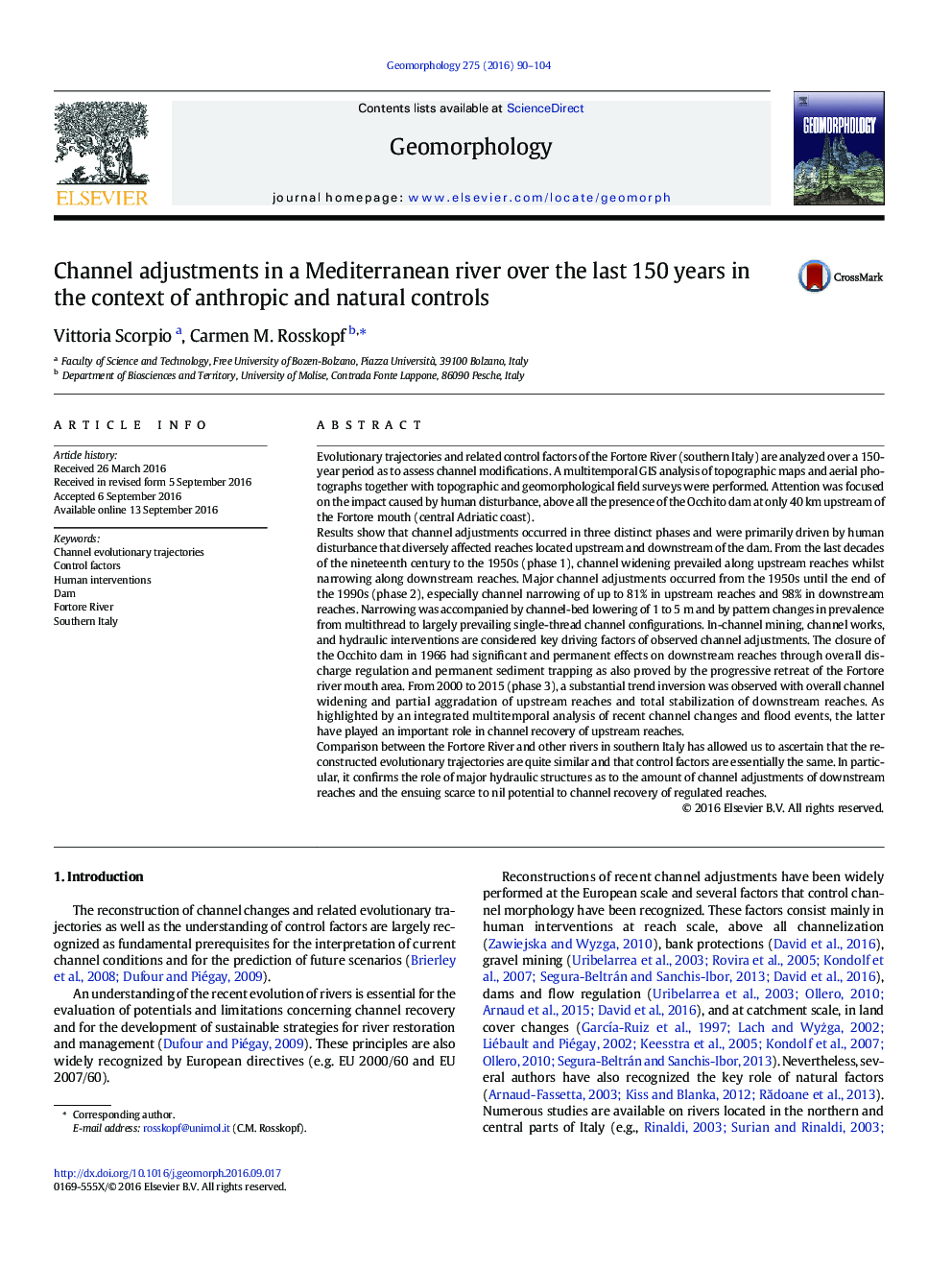| کد مقاله | کد نشریه | سال انتشار | مقاله انگلیسی | نسخه تمام متن |
|---|---|---|---|---|
| 4683880 | 1635374 | 2016 | 15 صفحه PDF | دانلود رایگان |

Evolutionary trajectories and related control factors of the Fortore River (southern Italy) are analyzed over a 150-year period as to assess channel modifications. A multitemporal GIS analysis of topographic maps and aerial photographs together with topographic and geomorphological field surveys were performed. Attention was focused on the impact caused by human disturbance, above all the presence of the Occhito dam at only 40 km upstream of the Fortore mouth (central Adriatic coast).Results show that channel adjustments occurred in three distinct phases and were primarily driven by human disturbance that diversely affected reaches located upstream and downstream of the dam. From the last decades of the nineteenth century to the 1950s (phase 1), channel widening prevailed along upstream reaches whilst narrowing along downstream reaches. Major channel adjustments occurred from the 1950s until the end of the 1990s (phase 2), especially channel narrowing of up to 81% in upstream reaches and 98% in downstream reaches. Narrowing was accompanied by channel-bed lowering of 1 to 5 m and by pattern changes in prevalence from multithread to largely prevailing single-thread channel configurations. In-channel mining, channel works, and hydraulic interventions are considered key driving factors of observed channel adjustments. The closure of the Occhito dam in 1966 had significant and permanent effects on downstream reaches through overall discharge regulation and permanent sediment trapping as also proved by the progressive retreat of the Fortore river mouth area. From 2000 to 2015 (phase 3), a substantial trend inversion was observed with overall channel widening and partial aggradation of upstream reaches and total stabilization of downstream reaches. As highlighted by an integrated multitemporal analysis of recent channel changes and flood events, the latter have played an important role in channel recovery of upstream reaches.Comparison between the Fortore River and other rivers in southern Italy has allowed us to ascertain that the reconstructed evolutionary trajectories are quite similar and that control factors are essentially the same. In particular, it confirms the role of major hydraulic structures as to the amount of channel adjustments of downstream reaches and the ensuing scarce to nil potential to channel recovery of regulated reaches.
Journal: Geomorphology - Volume 275, 15 December 2016, Pages 90–104